#Captain Marryat
Explore tagged Tumblr posts
Text

The circumstance of my going to sea affected my father in no other way than it interfered with his domestic comforts by the immoderate grief of my poor mother. In any other point of view my choice of profession was a source of no regret to him.
— Frederick Marryat, Frank Mildmay (The Naval Officer).
"Fitting Out": an 1820 drawing and watercolour picture by Captain Marryat (British Museum). The mother of the young midshipman destined for H M Ship Hellfire weeps at left.
#frederick marryat#captain marryat#age of sail#royal navy#midshipman#naval history#frank mildmay#marryat's art#napoleonic#the sea
18 notes
·
View notes
Photo
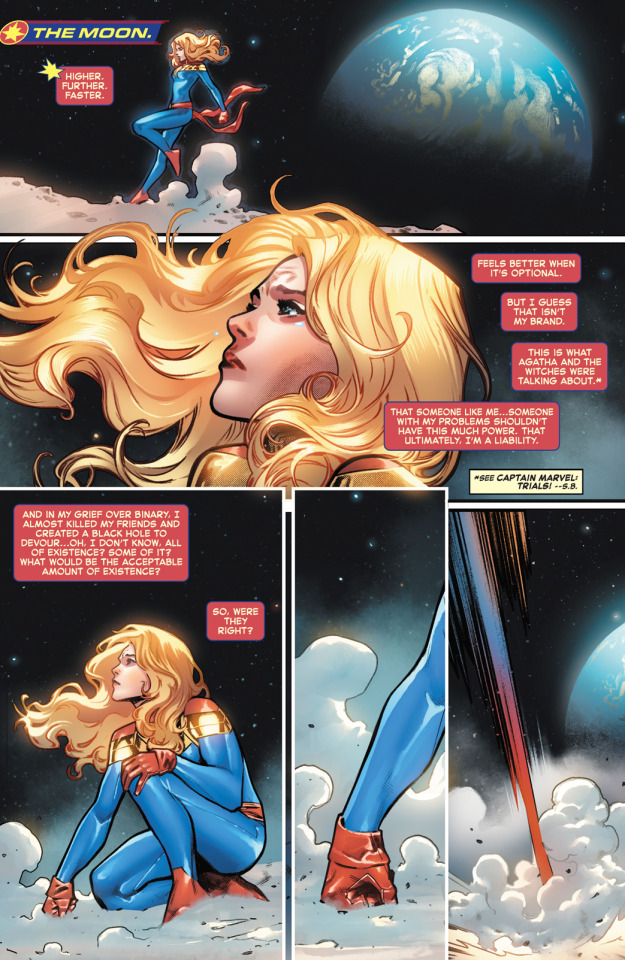
Captain Marvel #50 - "Marvelous" (2023)
written by Kelly Thompson art by Javier Pina, David Lopez, & Yen Nitro
#captain marryat#carol danvers#marvel#wednesday spoilers#spoilers#comic spoilers#comic book spoilers
74 notes
·
View notes
Text
They should stop having sad soggy pathetic boat men tournaments and start having Smug Obnoxious Jerk Boat Man tournaments. I nominate all of Captain Marryat's protagonist characters and also Marryat himself.
#frederick marryat#captain marryat#i'm thinking about#frank mildmay#jack easy#percival keene#i like to pretend i live in a world where people know marryat and his works
22 notes
·
View notes
Photo
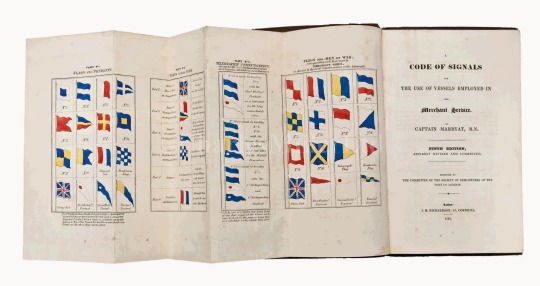
A code of signals for use aboard merchant vessels, published with the permission of Capt. Marryat, published by J.M. Richardson, 1844
61 notes
·
View notes
Text

The Arbours and other Obscurities
The Arbours and other Obscurities On the anniversary box set of the film Valley Of The Dolls is a bonus documentary about Jacqueline Suzanne & her personal promotion for the book & film. One of things she did was commission a title song for the film, which never got used, much to her disappointment. It was performed by The Arbors. I tracked it down on The Very Best of The Arbors. Think The…
View On WordPress

#ABC#After All#am writing#Bobby Taylor & the Vancouvers#Captain Marryat#concept album#Edmonton Symphony Orchestra#Jacqueline Susann#Julian Jay Savarin#Julian’s Treatment#Lexicon of Love Live#lice concert#music#obscure#Ontario#photographs#Praying Mantis#Procol Harum#progrock#review#Sam Samudio#Sam The Sham and The Pharaohs#The Arbors#The Bards#Toronto#Valley of the Dolls
5 notes
·
View notes
Text
putterings, 256-254
dance of the wreck apophony eye blue cap and pale sleeves certainly not chairs the ball as it fell when the rain came, Spain
—
puutterings | their index | these derivations | 20230203
1 note
·
View note
Text
when the rain came
They had hardly sat down to table, when the rain came puttering down on the roof, and in a quarter of an hour the storm was as violent, and the thunder and lightning as terrific as on the day before. All the out-door labour was again suspended...
ex Robinson Ready Or the Wreck of the Pacific : Written for young people by Captain Marryat. Für die deutsche Jugend mit belehrenden Noten und einem Wörteruche versehen [provided with instructional notes and dictionary for German youth]. (Leipzig, Baumgärtner’s Buchhandlung, 1844) : 138 : link
—
“puttering” for “pattering” in Masterman Ready; or, The Wreck of the Pacific. Written for Young People. By Captain Marryat. vol. 2 (of 3), (London, 1842) : 16 : link (hathitrust)
This 1842 edition contains wood engravings, some marked “DICKES.DEL” (William Dickes, 1850-92), see BM bio : link and (or) “R BRANSTON.SP” (Robert Branston, 1803?-77), BM : link
catalogue record for this edition (Michigan copy) : link
—
Frederick Marryat (1792-1848) — wikipedia — authored : a signal code, several editions, the third in 1820 : A Code of signals for the use of Vessels employed in the merchant service; Including a cypher for secret correspondence : link (Österreichische Nationalbibliothek), nautical and children’s fiction, and even (uncertainly) The Floral Telegraph; or Affection’s Signals, By the Late Captain Marryatt [sic], R.N. (London, 1850?) : link
But I digress.
0 notes
Text
Because I am a masochist, I decided I wanted to read all the 19th century vampire literature. Currently I'm focusing on short stories and novels rather than plays.
I have read:
The Vampyre - John William Polidori
Varney the Vampire, or The Feast of Blood - James Malcolm Rymer
Dracula - Bram Stoker
Dracula's Guest - Bram Stoker
I have not yet read:
Fragment of Novel - Lord Byron
The Black Vampyre - Uriah Derick D'Arcy
Lord Ruthwen; ou, Les Vampires/Lord Ruthwen of the Vampires - Charles Nodier
Vampirismus - E.T.A. Hoffman
La Morte Amoureuse/Clarimonde - Théophile Gautier
The Vampyre - Elizabeth F. Ellet
Spiritual Vampirism - Charles Wilkins Webber
Le Chevalier Ténèbre/Knightshade - Paul Féval
La Vampire/The Vampire Countess - Paul Féval
La Ville Vampire/Vampire City - Paul Féval
Carmilla - J. Sheridan Le Fanu
Strange Event in the Life of Schalken the Painter - J. Sheridan Le Fanu
The Fate of Madame Cabanel - Eliza Lynn Linton
Ninety Years Later - Milovan Glišić
Manor - Karl Heinrich Ulrichs
A Mystery of the Campagna - Anne Crawford
Let Loose - Mary Cholmondeley
Le Captine Vampire/Captain Vampire - Marie Nizet
The True Story of a Vampire - Eric Stenbock
The Vampire - Alexei Tolstoy
The Family of the Vourdalak - Alexei Tolstoy
The Reunion After Three Hundred Years - Alexei Tolstoy
The Prayer - Violet Hunt
The Blood of the Vampire - Florence Marryat
The Vampire of the Val-de-Grace - Léon Gozlan
The Vampire and the Devil's Son - Pierre Alexis Ponson du Terrail
Wake Not the Dead - Ernest Rapauch
The Vampire of the Carpathian Mountains - Alexandre Dumas
The Pale Lady by Alexandre Dumas
Pepopukin in Corsica - Arthur Young
Good Lady Duncayne - Mary Elizabeth Braddon
Luella Miller - Mary E. Wilkins Freeman
The Skeleton Count, or The Vampire Mistress - Elizabeth Caroline Grey
The Virgin Vampire - Étienne-Léon de Lamothe-Langon
The Phantom World - A.A. Calmet
Death and Burial: Vampires and Werewolves - Emily Gerard
And the Creature Came In - Augustus Hare
The Tomb of Sarah - F.G. Loring
And then there is this book which I don't even know if I can read, because I've yet to find an English translation and don't know if it even has one:
Der Vampyr – Novelle aus Bulgarien - Hans Wachenhusen
Are there any others I'm missing? Are any of those not actually vampire stories or not from the nineteenth century and I've been misled?
As to why the nineteenth century: I think if I tried to read all vampire stories EVER it would take the entire rest of my life and then some, and also early vampires are fascinating to me because all the standard tropes were not yet in effect.
As to why I'm doing this at all: Who even knows. I need things to distract my brain.
22 notes
·
View notes
Text
The Origins of The Wolfman
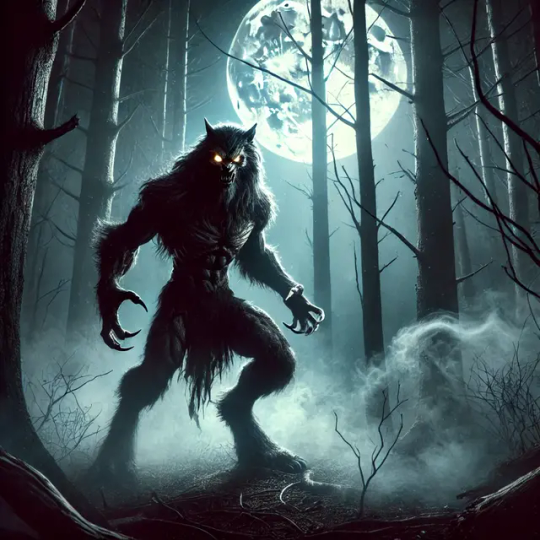
The story of Universal's "The Wolfman" (1941) is one of the most iconic werewolf tales in cinema, but its origins are a blend of older folklore, literature, and mythology. The concept of werewolves has been around for thousands of years, long before Universal's monster movies.
Origins of "The Wolfman" Story
The 1941 film "The Wolfman", written by Curt Siodmak, introduced many of the tropes we now associate with werewolves, such as the use of silver to kill them, the transformation during a full moon, and the notion of the curse being passed on through a bite. While Siodmak invented much of this for the film, he drew from centuries of werewolf lore and mythology, weaving them into a modern narrative that fit the Universal monster film canon.
Who Invented Werewolves?
Werewolves have been part of human mythology for millennia, and there is no single person or culture credited with "inventing" them. Instead, werewolves have appeared in various forms across different cultures:
Ancient Greece and Rome: One of the earliest werewolf stories comes from Greek mythology. The legend of "Lycaon", a king who angered Zeus and was transformed into a wolf, is where we get the term "lycanthropy." Roman authors like Ovid also wrote about men turning into wolves in works such as "Metamorphoses".
Norse and Germanic Mythology: The Norse sagas and Germanic folklore also feature tales of men who could transform into wolves, such as the Viking berserkers who were believed to be able to take on the powers of animals, including wolves, during battle. The "Volsunga Saga" tells of men who wore enchanted wolf pelts and transformed into wolves.
Medieval Europe: In medieval Europe, werewolves were often linked with witchcraft and the devil. Many believed that witches could transform into wolves or other animals, and there were numerous werewolf trials in places like France and Germany, much like the witch trials. The fear of werewolves was often tied to religious and superstitious beliefs about the devil's influence over humans.
Indigenous Cultures: Indigenous peoples in North America, such as the Navajo, have legends about shape-shifters, often referred to as skinwalkers, who could transform into animals, including wolves.
How Long Have Werewolves Been Around?
Werewolf myths and legends date back to at least the ancient world, more than 2,000 years ago, if not further. The idea of humans transforming into wolves, either voluntarily or through a curse, has been a common theme across various cultures. Throughout history, werewolves have appeared in art, literature, and oral traditions.
The Epic of Gilgamesh (circa 2100 BCE) – One of the earliest known references to lycanthropy. In this Sumerian epic, the goddess Ishtar turns a former lover into a wolf.
"The Satyricon" by Petronius (1st century CE) – A Roman work of fiction that includes a passage where a man transforms into a wolf, making it one of the oldest literary depictions of a werewolf.
"The Metamorphoses" by Ovid (8 CE) – This Latin narrative poem contains the story of Lycaon, a man transformed into a wolf by Zeus, one of the earliest and most influential werewolf myths.
"Bisclavret" by Marie de France (12th century) – A French medieval romance about a knight who turns into a wolf. This tale is an early example of sympathetic werewolf stories.
"The Book of Were-Wolves" by Sabine Baring-Gould (1865) – One of the first comprehensive studies on werewolves, combining folklore, history, and mythology about lycanthropy.
"Wagner the Wehr-Wolf" by George W.M. Reynolds (1846-1847) – A serialized Gothic novel that tells the story of a man cursed to become a wolf.
"The Were-Wolf" by Clemence Housman (1896) – A short novel about a mysterious and seductive woman who transforms into a werewolf, blending Gothic horror with themes of gender and power.
"The Phantom Ship" by Captain Frederick Marryat (1839) – While the main focus is on a haunted ship, there is a notable episode involving a werewolf.
"The White Wolf of the Hartz Mountains" by Captain Frederick Marryat (1839) – A short werewolf story often included in collections of Gothic horror, with a sinister white wolf terrorizing a family.
"The Werewolf of Paris" by Guy Endore (1933) – A key influence on later werewolf films, this novel explores a man’s transformation into a werewolf in Paris during the Franco-Prussian War.
Films:
"The Werewolf" (1913) – A silent short film believed to be the first werewolf movie ever made. It was based on a short story by Henry Beaugrand called "The Werewolves", about Native American shape-shifting legends. Unfortunately, the film is considered lost.
"Le Loup-garou" (1923) – A French silent film with a werewolf theme, directed by Pierre Bressol.
"Wolf Blood" (1925) – Another silent film, this one blending early horror with elements of the frontier. It follows a man who believes he is becoming a wolf after receiving a blood transfusion from a wolf.
"Werewolf of London" (1935) – The first full-length werewolf film from Universal Studios, preceding "The Wolfman" (1941). It tells the story of a botanist who is bitten by a werewolf while on an expedition and transforms into a creature after returning to London.
4 notes
·
View notes
Photo

The Brown Lady of Raynham Hall
In 1936 Captain Hubert C. Provand was taking photos of the picturesque Raynham Hall, a country house in Norfolk, England, when he snapped this picture.
As Provand was setting up the shot, his assistant called out for the photo to be taken ‘now’, as something was descending the staircase. The result is this world famous ghost photo, said to be that of Lady Dorothy Walpole.
September 19, 1936: Photographer, Captain Hubert C Provand and his assistant, Indre Shira were taking pictures of Raynham Hall, Norfolk, England for the December issue of ‘Country Life’ Magazine.
Little did they know that on this day they would capture the ghost that has said to be haunting the old country house since the mid 1800’s.
The ghost is better known as the ‘Brown Lady’, as the spectre has been described as wearing a brown silk brocade dress.
It is believed that the Brown Lady is the spirit of Lady Dorothy Walpole, who died at Raynham Hall in 1726 from Smallpox, after a long incarceration within the houses walls.
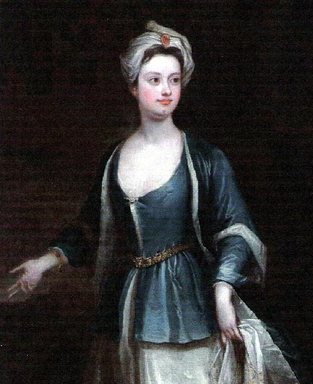
Dorothy Walpole was the sister of Sir Robert Walpole, who was considered to be the first Prime Minister of Great Britain (serving 1721 to 1742 which would also make him the longest serving Prime Minister). Dorothy was Charles Townsend’s second wife, Charles having served as the secretary of state for ten years.
It is said that Dorothy had an affair with the 1st Duke of Wharton, Philip Wharton (yes all these upper class families make for quite complex reading and research), and her husband, Sir Walpole did not take too kindly to that, and had Dorothy locked in the upper floor rooms of their home – Raynham Hall.
Another story states that Dorothy was entrapped by the Countess of Wharton, never to leave the house… not even to see her children. It is said she returns to find, and finally be reunited with her children. A sad tale indeed!
Either way Lady Dorothy Walpole died of Smallpox 29th March 1726 aged forty.
The Brown Lady aka (possibly) Lady Dorothy Walpole has been seen on a number of occasions since her death, with the first recorded sighting being in 1835 after a Christmas party. Several guests had seen the ghost as they went up to their bedrooms for the evening, one describing it as having a glowing face but with empty eye sockets.
Captain Marryat (a gentleman who wrote novels set out at sea) retired to his room one night, and had remarked to two others he met on the way that he was carrying a gun as protection against the Brown Lady. It was at this point the apparition appeared and ‘diabolically’ grinned at the captain as she passed by him.
The captain took two shots, both passing straight through the apparition, to embed in the door and door frame beyond.

Many other people have witnessed the Brown Lady on the main staircase and in the bedrooms. Generally these sightings occur when heading to bed, or waking up in the middle of the night to find her standing in their rooms.
The ghost has also been seen right before tragic events and deaths that affect the Townsend Family. One evening, during a dinner party, many guests had seen the apparition, complete with her brown dress, walking through the crowd. The Spectre did not seem to recognize anyone and soon disappeared. The next morning, news of the death of George Walpole reached the group at the estate, George had died at about the same time the Brown Lady has been seen.
On the fateful day the photo was taken, Captain Hubert C Provand and his assistant Indre Shira had set up the camera at the foot of the main staircase, with Provand under the protective cloth at the back of the camera. They had already taken one photo and Provand was re framing for another shot. Shira suddenly called out to Provand to take another shot and at this Provand removed the lens cover and made the exposure.
Shira had seen the figure of a lady descend the staircase when he called for the photo to be taken. Upon development, the image did indeed show a spectral figure on the staircase; The Brown Lady had been captured at last!
The picture was published in Country Life magazine December 16th 1936, along with the accounts of Provand and Shira.
Renowned paranormal investigator Harry Price interviewed the two men and stated he could not find a flaw in their story, as the negative also showed the figure. With the exception of the two men lying, he could not see how the image could be anything but that of the ghost in question.
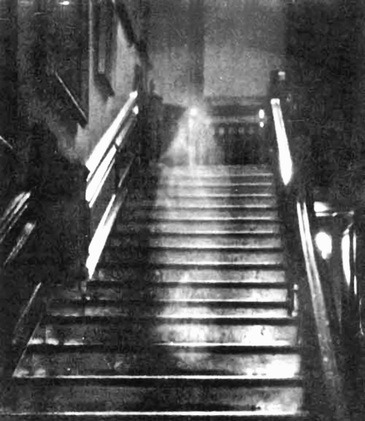
#The Brown Lady of Raynham Hall#the brown lady#Raynham Hall#Haunted Location#paranormal#ghost photo#ghost#hauntings#spirits#ghost and hauntings#ghost and spirits#haunted salem#myhauntedsalem
27 notes
·
View notes
Text

The squadron continued to hover on the French coast, with a view of alarming the enemy, and of making a more fortunate attempt, if opportunity occurred. Early in the morning of the fourth day after Willy had been promoted to the quarter-deck, a large convoy of chasse-marees (small coasting vessels, lugger-rigged) were discovered rounding a low point, not three miles from the squadron. A general signal to chase was immediately thrown out, and in half an hour the English men-of-war were in the midst of them, pouring broadside after broadside upon the devoted vessels, whose sails were lowered in every direction, in token of submission.
— Frederick Marryat, The King's Own
French "Chasse Marée' running before a gale by Christer Hägg.
#frederick marryat#captain marryat#age of sail#napoleonic wars#the king's own#chasse-marée#the sea#fishing boat#maritime history#christer hägg
7 notes
·
View notes
Text
More evidence that Marryat was the victim of a hoax comes from a knuckleheaded parody of his work, Lie-ary on America, with Yarns on its Institutions (1840) by ‘Captain Marry-It’. The pseudonymous American author rewrites the Englishman’s account in the most ludicrous manner, but seems satisfied to rehearse the grazed knee incident at Niagara Falls more or less as Marryat tells it, describing how the L-word ruined a pleasant afternoon of sightseeing: ‘Sink my hull if she didn’t instanterly capsize in a swoon; and her mammy told me never to mention that wulger thing “leg” in the presence of a Yankee female, or I might endanger their lives and their modesty for ever.’ The joke is essentially unchanged, suggesting that most American readers would find this genuphobia as ridiculous as those in England.
Inventing The Victorians, Matthew Sweet (re. the whole "Victorians put pantalettes on piano legs" canard)
Thinking About: Leg
2 notes
·
View notes
Text
It’s Frederick Marryat’s birthday very soon (10 July 1792), and I’ve been thinking a lot about the effect he’s had on my life: and just what is the nature of my fascination with this man. I think a huge part of being interested in Marryat is being drawn to the man himself, not just his stories and travel writing. You have to have some kind of personal investment in this bitchy, lecherous, sarcastic, self-righteous, frequently infuriating and problematic man; you have to care about him on some level. He feels extremely present in his writing.
I think Virginia Woolf expressed it well when she wrote in her essay on Marryat, “The Captain’s Death Bed”:
Often in a shallow book, when we wake, we wake to nothing at all; but here when we wake, we wake to the presence of a personage—a retired naval officer with an active mind and a caustic tongue, who as he trundles his wife and family across the Continent in the year 1835 is forced to give expression to his opinions in a diary.
Sometimes I wonder about what Marryat would think of me as his reader. In response to criticism in Fraser’s Magazine, Marryat wrote a long letter defending his work in cheap weekly newspapers which would be read by the lower classes (reproduced in The Life and Letters of Captain Frederick Marryat, edited by his daughter Florence Marryat). He starts out strong, attacking elitist attitudes about literature, and then shows his ass with smug pronouncements about how he’s writing wholesome fare to educate the lower classes, unlike trashy weeklies filled with “immorality and crime��� that also teach people to criticize the government or read Chartists! (Marryat was a complex person whose views can’t be pinned down with modern political labels, but he wasn’t very progressive, not even in his own time.)
Marryat was my introduction to the Napoleonic Wars and the War of 1812, which have become major interests, he was my first real exposure to Regency-period fashion and manners, and he has increased my general nautical knowledge a hundredfold. I feel a kinship with him across time and space as he offers his opinions on the world of the 1830s and 40s, a bit jaded in middle age but still keenly observant and very confident in his opinions.
#frederick marryat#captain marryat#shaun talks#he's one of those 'i wish i could study him in a jar' types (and i'd shake the jar too)#but i feel bad for him#this man was at war for a billion years starting from childhood#and it definitely messed him up#and he can be a genuinely good storyteller#complicated feelings for a complicated man#i will admit to liking marryat
33 notes
·
View notes
Photo
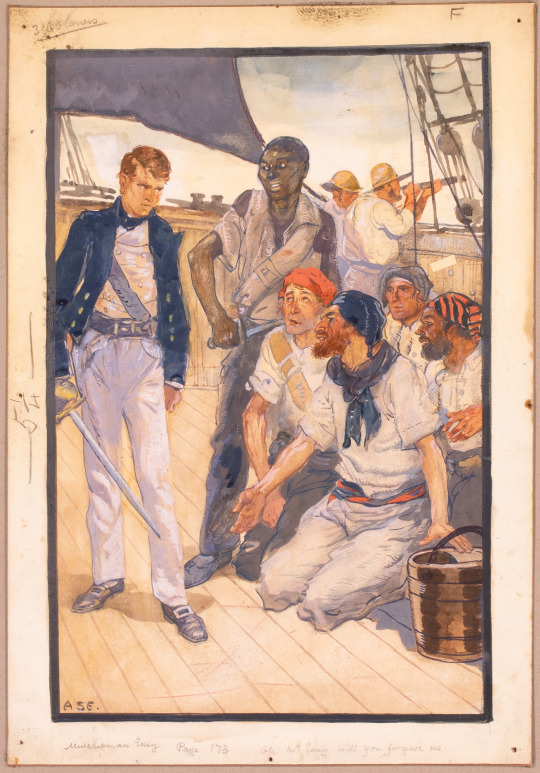
Book illustration for Mr. Midshipman Easy written by Captain Frederick Marryat
"Midshipman Easy, Page 173 - "Oh Mr. Easy, Please Forgive Us". by unknown
69 notes
·
View notes
Text

The Haunted Atlas
Raynham Hall - Norfolk, England
40° 52.335′ N / 73° 31.904′ W
Stately English manor house haunted for the last 250 years by the "Brown Lady," who appears on film in one of the most spectacular spirit photographs on record.
Raynham Hall, the seat of the Marquesses of Townshend, is located a few miles southwest of Fakenham in Norfolk. The Townshends became marquesses in 1786, and for generations they lavishly entertained royalty at Raynham Hall.
The identity of the Brown Lady is uncertain; it is believed she is the ghost of Lady Dorothy Townshend, wife of the second and most famous marquess of Townshend, daughter of Robert Walpole, member of Parliament for Houghton, and sister of Sir Robert Walpole, the first prime minister of England.
At age 26, Dorothy married her childhood love, Lord Charles Townshend, who had suffered the loss of his first wife about a year earlier in 1711. According to legend, Dorothy had been the mistress of Lord Wharton, and when Townshend discovered this after their marriage, he kept her locked in her apartment at the hall. It is not known how she died. Different versions of the legend say it was either of a broken heart, a fall down the staircase, or smallpox.
A portrait identified as Lady Dorothy hung in the hall until it was sold in 1904. The woman is dressed in brown brocade trimmed in yellow with a ruff around the throat. Her eyes are large and shining. It was rumored that the portrait looked normal when seen during the day, but if seen by candlelight the face became evil-looking and skull-like with no eyes.
Numerous stories of encounters with the Brown Lady have been recorded over the centuries. One of the most famous occurred in the early 19th century, when George IV, then regent, visited at the hall and was given the State bedroom. He awoke in the middle of the night to see a woman dressed in brown with dishevelled hair and a face of ashy paleness standing beside the bed. He was so frightened that he vowed he would not stay "another hour in this accursed house."
The Brown Lady was seen at Christmastime 1835 by Colonel Loftus, one of the many guests staying at the hall.
Lofus saw the ghost twice on succeeding nights. The first time, she was standing outside of lady Townshend’s room. When pursued by Loftus she went down the corridor and vanished. The second night, he encountered her on the staircase; she was carrying a lamp. He described her as a stately lady in rich brocade with a coif (a tight fitting cap) on her hair, but only empty, dark hollows for eyes. Loftus made a sketch of her, which he showed to guests at breakfast the following morning.
Not long after that, Captain Frederick Marryat, a novelist, was invited to the hall. Marryat has a weak theory that the ghost was somehow connected to smugglers and poachers who once had been prevalent in the area. One night, he and two of Lord Charles Townshend's nephews came face to face with the Brown Lady in a corridor. She held a lighted lamp and grinned at Marryat in what he termed "a diabolical manner." He was carrying a pistol, which he raised and shot at the ghost point-blank. The ghost disappeared. Marryat later swore the bullet passed right through her. It was found lodged in a door behind where the ghost had stood.
Following that episode, the Brown Lady was not reported again until 1926, when she was encountered by the then Marquis Townshend, who was a boy at the time, and one of his friends.

In 1936 Lady Townshend hired a photographer, Indra Shira, to take photographs of the interior of Raynham Hall. Shira and his assistant, Mr. Provand, were taking flash photographs of the staircase when Shira saw a vaporous form take shape on the stairs. It assumed the form of a woman who appeared to be draped in something white. The ghost began to descend the staircase. Shira excitedly ordered Provand to take a picture. Provand could not see the apparition, but he aimed his camera in the direction indicated by Shira. Provand would not believe that Shira had seen a ghost, and he accepted a five-pound bet that the photograph would show the white form. It did—the Brown Lady appeared as an outline wearing something like a wedding gown and veil. The photograph was published in Country Life magazine on December 1, 1936 and caused a sensation. The photograph has been examined by experts, but no evidence of fraud has ever been detected.
The Brown Lady also is said to haunt Houghton Hall, the home her brother built on the site of the old family home, occupied by Walpoles for some 600 years. It is said that Lady Townshend spent some of the happiest years of her life at Houghton. According to legend, her ghost appeared to the prince regent while he was sleeping in the State Bedroom. As a result, he transferred to other, albeit humbler, quarters.
Text from The Encyclopedia of Ghosts and Spirits, Third Edition by Rosemary Ellen Guiley (Checkmark Books - 2007)
1 note
·
View note
Text
Captain Marryat. “It Happened to Me”
Captain Marryat fue un grupo de rock escocés en la frontera entre el hard rock y el progresivo, formado hacia 1971 y disuelto en 1975, después de grabar un único Lp homónimo en 1974. Los músicos que grabaron este álbum fueron Tommy Hendry (voz, guitarra acústica), Allan Bryce (órgano, voz), Ian McEleny (guitarra solista, guitarra acústica), Hugh Finnegan (bajo, voz) y Jimmy Rorrison (batería,…
youtube
View On WordPress
0 notes